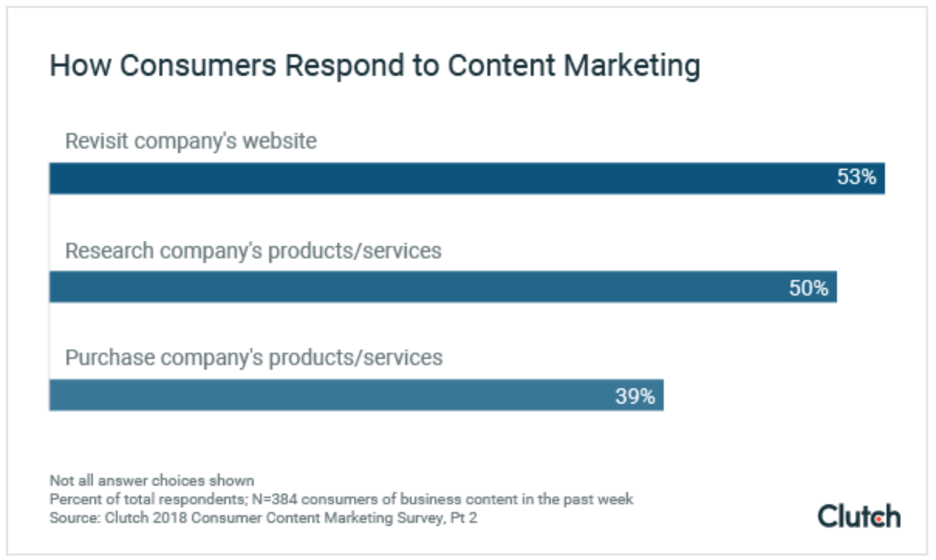The Brand-Building Value of Content Marketing
When considering the value of content marketing, businesses tend to focus on quantifiable performance indicators—think social media engagement numbers and increases in site traffic, lead generation, and (the holy grail) conversions. And that makes sense. If you haven’t outlined measurable KPIs for your content marketing strategy, you should get on that—stat.
But it’s also worth backing up and reminding yourself of the bigger picture in which your KPIs operate. Remember, content marketing is all about the long game, about building a relationship between you and your audience that eventually reaps business rewards. That takes time. It also leads to benefits that aren’t so immediately quantifiable. Let’s talk about how content marketing can build your company’s brand equity.
What Is Brand Equity?
Brand equity is the value of a brand’s identity in public perception. While experts have varying opinions on the metrics for gauging equity, most agree on these four facets:
- Brand awareness: Consumer familiarity with your brand–its products, services, and reputation.
- Brand associations: How a consumer perceives your brand, including the emotions, experiences, concepts, activities, images, and values they instinctively relate to it.
- Perceived quality: Consumers’ judgment of the value and desirability of your offerings.
- Brand loyalty: The trust and value that a consumer places in your brand such that they consistently buy from your company over others in the industry.
In essence, brand equity puts a finger on the pulse of a brand’s relationship with consumers and valuates it.
The Value of Content Marketing to Brand Equity
Since content marketing focuses on nurturing that brand-customer relationship, it’s actually the perfect vehicle for building high brand equity. Here’s a quick rundown of how content marketing can impact all four pillars of brand equity.
1. Content drives brand awareness.
Publishing content in the digital world gives you visibility to customers you could never reach through traditional media. And the more content you put out there, the more likely you are to be seen—with one key proviso: You’ve got to make quality, engaging content.
You don’t want to put out a fire hose of content that draws attention for its vapidity or inaccuracies. But as Google continues to adjust its algorithms to ensure that quality is key to SERP rankings, investing in high-quality content will improve your brand’s visibility and your organic engagement with prospects at the top of the sales funnel. To attract newcomers, focus on creating content that’s visually engaging, well-formatted, and easy to understand.
What content formats work well here?
- Video: In recent years, video popularity has surged among customers to become a favorite and top-performing format. Videos don’t have to be long or complicated (in fact, they shouldn’t be), but they should be an essential part of your brand awareness game.
- Blogs: Tried and true, blogs boost overall organic traffic to your site when done properly.
- Infographics: Infographics are attention-grabbing, memorable, and shareable over a variety of content channels.
A note, EVG Media’s recent work with RAVE computer offers a reminder that the quality of your SEO is as important as the quality of your content in drawing digital eyes to you. We partnered with RAVE to promote the company’s RenderBEAST computer through exciting content and infographics utilized across channels including paid media. At the same time, we optimized their site pages. The latter efforts alone drove a steady increase in qualified organic traffic to their product pages over time.
2. Content develops brand associations.
Once you’ve pulled a consumer into your content world, you’ve won the opportunity to develop their brand associations. Content marketing is uniquely suited to this process in three key ways. First, it lives online, where most modern consumers make their purchase journey. Your digital content can reach buyers midstream in that journey and distinguish your brand from the others they’re researching.
Second, digital content can stick around for a long time–much longer than traditional print products or broadcast media. As a result, it can offer better returns on brand impression and differentiation than an expensive but time-limited ad campaign.
Third, quality content offers more detailed information to customers than traditional ad outreach. You can explain your offerings, give industry insights, broadcast your biggest successes, or show and tell the human stories behind your brand. All of these feed into what consumers know, experience, and feel about your brand, forging more meaningful relationships.
A few ways to develop brand associations through content:
- Social media: Social media has unparalleled power to project a distinctive voice and personality for your company. Take EVG’s work with international luxury hotel company, Accor Hotels. We took on social media work for their Raffles Hotels and Swissôtel brands, posting brand-specific content and engaging with audience responses. In four months, Raffles’ Instagram followers shot up by 93% and Swissôtel’s Instagram likes spiked by 129%. Proof that brand-focused content can weave ongoing connections with consumers.
- Short-form videos: Showcase real employees and behind-the-scenes moments that today’s consumers love in this popular, shareable format.
- Product descriptions and FAQs: Underestimated but incredibly useful, good product descriptions and FAQs show your audience you’re in tune with their needs and willing to meet them where they are.
3. Content boosts perceived value.
If you’re concerned that customers perceive content in general as disingenuous, a quick note: People know brands use content marketing and recognize it when they see it. Instead of regarding such content as biased, however, two-thirds of people (67%) surveyed by Clutch still considered content marketing useful and valuable.
What makes online content valuable to customers? First, prospective buyers are seeking detailed information that proves you have what they need. If you have a robust (well-organized) backlog of content with that info, they can find those details, get to know your brand, and develop confidence in your experience, expertise, ethics, and quality offerings.
Since consumers use content to evaluate which brands provide the best value in their field, it’s a good idea to use content marketing to display your past successes and present thought-leadership. Doing so helps differentiate your brand to customers in the latter stages of the sales funnel. What kind of content helps here? A few examples:
- Case studies: The only surefire way to prove your expertise is to show you can apply it. Case studies share your success stories with the world. At EVG, we make sure you can find some of our biggest successes highlighted on our website.
- eBooks: There’s nothing like a book to telegraph your in-depth knowledge and provide real value to your customers. A highly durable asset, they’re easy to promote and will pay you back in elevated brand stature and lead generations.
- Explanation/demonstration videos: Detailed presentations of your products and services show that you know your field and lets you explain “in person” the quality of your offerings.
Customer-written content can boost perceived value as well. Status Labs reports that 90% of people seek input through online reviews before buying from a business. Embracing outside judgment of your product can seem risky, but it assures your audience of your transparency. People want comprehensive, detailed, and honest content to help them make a well-informed decision. Providing this content is the best way to nudge them toward conversion.
4. Content fosters brand loyalty.
When consumers feel they know you and know they can trust you, you’ve got a solid foundation for fostering the capstone of brand equity—brand loyalty. Content brings consumers to you, and it also keeps them engaged, upping your chances of conversions. As Clutch found in its survey, over half of content marketing consumers are more likely to revisit a company’s website to learn more, and 39% will eventually purchase its products or services.

Once you’ve turned consumers into customers, you can continue to build affinity with them by providing actionable information, telling your company’s ongoing stories, and creating shared experiences around discussable content. Great content guides people to a buying decision with a mix of information and entertainment. That same mix can keep them coming back for more, until they’re once again ready to purchase.
At EVG, we’ve seen this play out in our work with Accor hotels, home to brands like Sofitel, Fairmont, Swissotel, and Pullman. Consumers envision themselves at the center of the inspirational travel content and narratives we create, choose to book with Accor, enjoy a wonderful experience, and continue to consume brand content until they’re inspired to travel again. Our work has helped grow a group of customers who repeatedly choose Accor over other hospitality brands.
What are some tools to help you sustain brand loyalty?
- Social media: Build relationships with engaging content and discussion. Create a mix of helpful information, positive perspectives, and authentic spotlights on your people and offerings.
- Email newsletters: An oldie but a goodie, newsletters are great for staying top-of-mind and building your brand as a personalized expert consumers can turn to.
- Influencer marketing: Influencer marketing tends to be billed as a way to bring in new customers. But it can also cement loyalties from old customers. Partner with influencers who share your values and perspectives to reassure present customers that those meaningful connections with them are still present.
Content marketing is an investment in brand equity because it’s how brands build relationships with people in the digital era. A comprehensive content-marketing strategy amps up your ability to reach customers at every stage of the sales funnel, secure their trust and business, and earn their long-term loyalty. As you continue to develop your content strategies, remember that brand equity, even more than immediate ROI, is the long-term value of content marketing.



